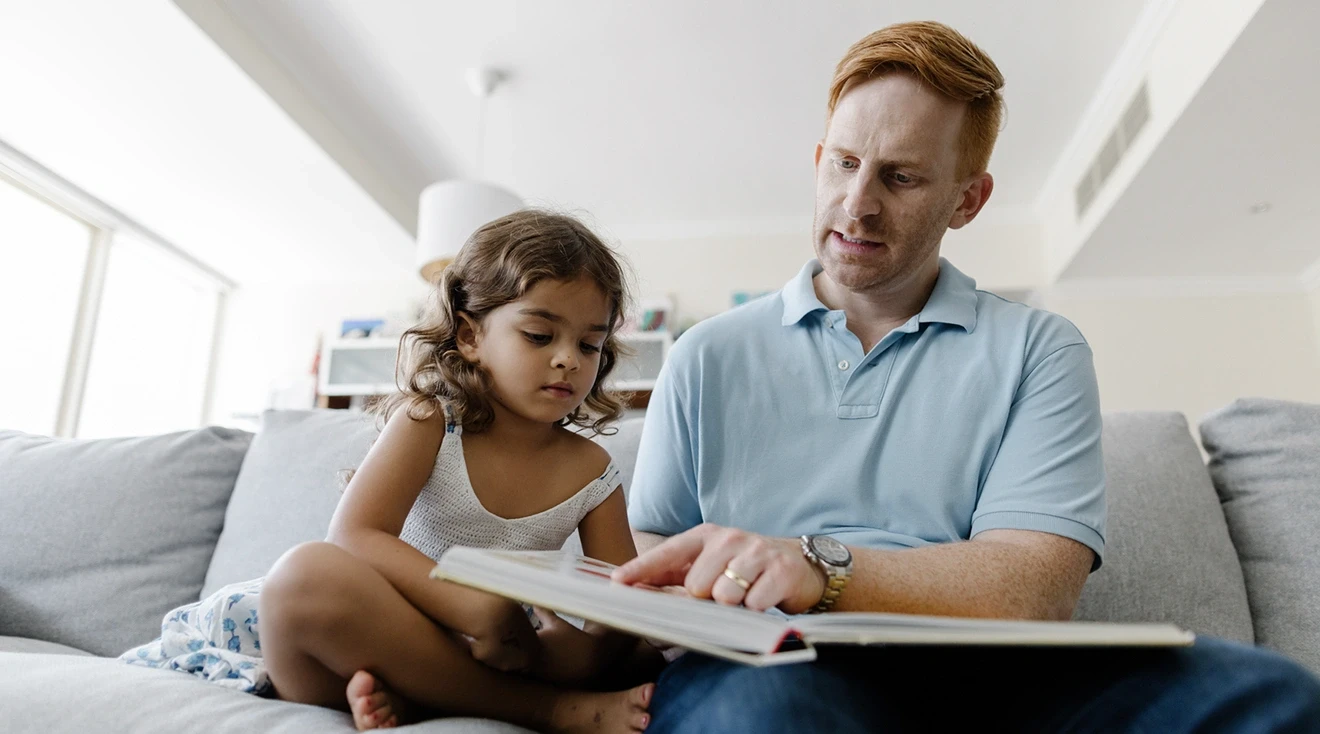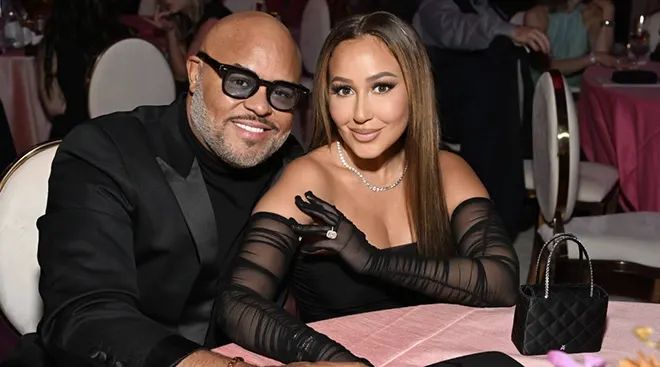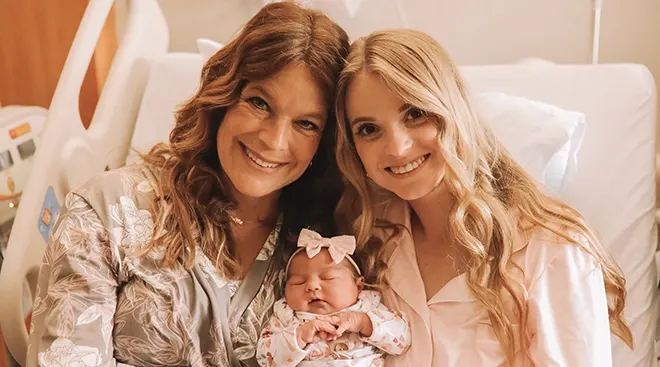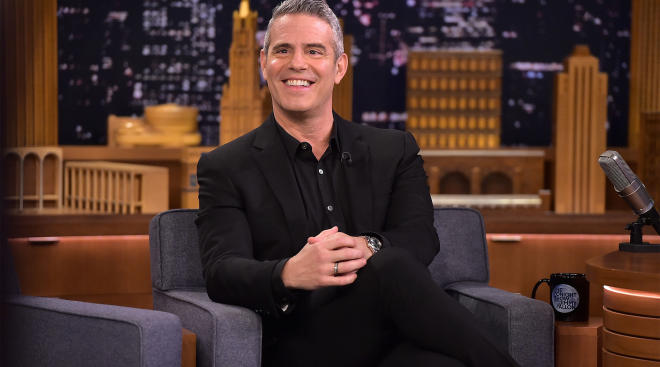How to Talk to Your Kids About Surrogacy
There will come a day when your child asks you where they came from. For parents of children born via surrogacy, fielding such a question might seem especially tricky. But it doesn’t have to be, says Kim Bergman, PhD, LCSW, author and chair of the mental health professionals group of the American Society for Reproductive Medicine (ASRM). “When you’re really honest from the beginning, kids don’t have any preconceived ideas and just accept what they’re told,” Bergman says. “It’s adults who tend to overcomplicate things.”
Whether your child was born via surrogacy, they’re expecting a sibling via surrogacy or they’re just curious about how other families work, we’re here to help with expert tips and conversation starters.
While many parents envision having this conversation with older children down the road, experts advise kicking things off right in the womb. “I instruct [gestational carriers] to start talking to baby during gestation,” says Kris Prosbasco, LCSW, a social worker and infertility resource counselor based in Kansas City. She suggests a script such as, “Your parents wanted to have a baby, and they weren’t able to carry you. They asked me if I would, and it’s been my pleasure. I look forward to you meeting [them].” Likewise, intended parents should talk to baby too!
Prosbasco estimates that it takes six or eight years for kids born via surrogacy to fully grasp their origin story. Nevertheless, she maintains that it’s easier to begin telling children about surrogacy when they’re young.
“If you tell your child their story right from the beginning, you never have to sit them down and tell them—it’s never a shock,” Bergman says. After all, waiting until kids get older gives them a chance to create false assumptions about where they came from—assumptions you’ll then have to correct.
There’s another perk to introducing the concept of surrogacy early: It equips young children with background knowledge to ask questions when they become able. Even better? It gives you the chance to practice your script, so you’ve got it down pat by the time your presentation starts to matter. “If talking about surrogacy makes you anxious, your kid is going to pick up on it,” Bergman says. “But if you’re proud of how your child came into the world, they will be too.”
Prosbasco suggests making a surrogacy story/scrapbook she calls a “beginnings book.” It should include a narrative about parents who want a baby and aren’t able to have one. Then, they go to a doctor who introduces them to a nice “carrier” who wants to help (plus an egg or sperm donor who “gave up some cells to make you,” if relevant).
It should also contain photos of the pregnant surrogate and other “helpers,” such as the surrogate’s family members; a photo of the positive pregnancy test; embryo pictures from every month and a photo of everyone—the surrogate, their family, the baby and your family—with commentary about how happy everyone is to be a part of this birth story. To make the ending concrete, add a photo of baby coming home. This way, “they can really own their story,” Prosbasco says.
Always start from the beginning of a child’s story when you tell it—that is, that they were deeply desired by their parents, who needed some help to bring them into the world. “It’s easier to have that build up so the child always knows they were wanted no matter what it took for them to get here,” Prosbasco says.
Bergman says she trusts the parents of surrogate children to assess what level of detail is age-appropriate as long as facts are always rooted in truth: “Undoing a lie is always harder than telling a truth,” she says. “You should always be truthful; you should always be accurate, but you don’t always have to be thorough. You can add layers as the child is older.” In other words, details regarding mechanics of in vitro fertilization (IVF) might wait until later—but always be transparent regarding the big details—including your surrogate’s name. Moreover, be willing and eager to answer questions as they come up.
Speaking of questions: Once your child gets a handle on their story, you’ll want to ensure important adults in their life understand it too: Sharing your child’s surrogacy status with their teachers can help thwart confusion when your child casually mentions that they didn’t come from just their parents.
Communicating with children early and truthfully in an age-appropriate way can help a child both understand where they came from and embrace their family’s uniqueness, whatever the situation.
Families are created in all different ways—a fact you can reinforce with relevant children’s books, says Bergman. Probasco says that play therapy can also be helpful; you can use dolls to explain how surrogacy works.
Kids are inquisitive by nature. They may ask questions about themselves, their siblings or a close friend. Encourage this curiosity and respond to it with honesty and simplicity. If you don’t make the conversation a big deal, your kid won’t either.
Please note: The Bump and the materials and information it contains are not intended to, and do not constitute, medical or other health advice or diagnosis and should not be used as such. You should always consult with a qualified physician or health professional about your specific circumstances.
Plus, more from The Bump:
Kim Bergman, PhD, LCSW, is author of the children’s surrogacy book You Began as a Wish, and chair of the mental health professionals group of the American Society for Reproductive Medicine (ASRM).
Kris Prosbasco, LCSW, is a social worker and infertility resource counselor based in Kansas City with more than 40 years of experience guiding families through everything from adoption to surrogacy.
Learn how we ensure the accuracy of our content through our editorial and medical review process.
Navigate forward to interact with the calendar and select a date. Press the question mark key to get the keyboard shortcuts for changing dates.





















































